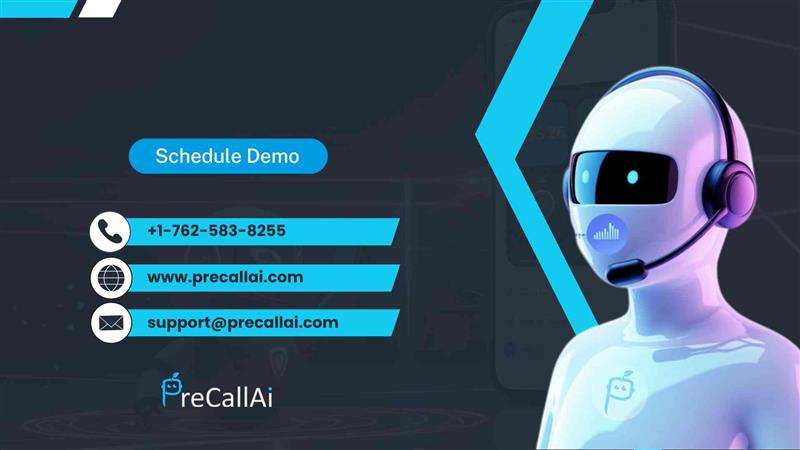Business call automation is transforming how companies interact with their customers every day. Modern businesses need faster response times and better customer experiences. Smart phone automation delivers these results. Companies that embrace these technologies gain significant competitive advantages.
Table of Contents
Why Business Call Automation Is More Important?
Customer expectations have reached unprecedented levels. People want immediate responses to their questions. They expect personalized service around the clock. Traditional call centers struggle to meet these demands.
AI-driven chatbots and virtual assistants are becoming central to customer engagement for many businesses. These tools provide instant support and route queries efficiently. They escalate complex issues to human agents. Response times improve dramatically with automated systems.
The Current State of Customer Service
Most businesses handle customer calls manually. This approach creates bottlenecks. Customers wait longer for assistance. Service quality becomes inconsistent across different representatives.
Manual processes increase operational costs. Companies need more staff to handle growing call volumes. Training new employees takes time and resources. Employee turnover disrupts service continuity.
Benefits of Automated Calling Systems
Automated systems work 24/7 without breaks. They handle multiple calls. Customers receive consistent service quality. Response times decrease from minutes to seconds.
Cost savings are substantial with automation. Companies reduce staffing requirements. Training costs disappear for automated responses. Operational efficiency increases dramatically.
Core Components of Business Call Automation
Intelligent Call Routing
Smart routing systems analyze caller information instantly. They direct calls to the most appropriate department. VIP customers receive priority treatment. Technical issues go to specialized teams.
The system learns from historical data. Call patterns become predictable over time. Routing accuracy improves with each interaction. Customer satisfaction scores increase.
Interactive Voice Response (IVR)
Modern IVR systems understand natural language. Customers speak normally. The system recognizes intent and emotions. Complex queries get proper handling.
AI-driven chatbots and virtual assistants allow customers to resolve queries efficiently without human intervention. Simple questions receive immediate answers. Account information is accessible instantly. Routine tasks complete automatically.
Automated Call Distribution
ACD systems balance workloads across available agents. They consider agent skills and availability. Queue management becomes more efficient. Customer wait times decrease substantially.
Performance metrics track agent productivity. Managers identify training needs quickly. Resource allocation improves based on data. Service levels remain consistent throughout the day.
Strategic Implementation Approaches
Phase 1: Assessment and Planning
Companies must evaluate their current call handling processes. They identify pain points and inefficiencies. Goals and objectives get defined clearly. Success metrics are established upfront.
Budget considerations include software costs and implementation time. Staff training requirements are calculated. Integration needs with existing systems are assessed. Timeline expectations are set realistically.
Phase 2: System Selection
Different business call automation solutions serve different needs. Small businesses need simple, cost-effective options. Large enterprises require scalable, feature-rich platforms. Industry-specific requirements must be considered.
Vendor evaluation includes feature comparisons and pricing analysis. Technical support quality matters. Integration capabilities with existing systems are crucial. Scalability options accommodate future growth.
Phase 3: Implementation and Testing
Pilot programs test systems with limited scope. Feedback from early users guides improvements. Technical issues get resolved. Staff training happens gradually.
Testing includes call quality assessments and system reliability checks. Performance metrics are monitored closely. Customer feedback is collected and analyzed. Adjustments are made based on results.
Advanced Features for Enhanced Engagement
Real-Time Analytics
Analytics dashboards provide immediate insights into call performance. Managers see call volume trends and agent productivity. Customer satisfaction scores update continuously. Problem areas are identified quickly.
Predictive analytics forecast call volumes. Staffing decisions become data-driven. Resource allocation improves efficiency. Customer experience remains consistent.
Sentiment Analysis
AI technology analyzes customer emotions. Frustrated customers receive immediate attention. Positive interactions are recognized and rewarded. Training opportunities are identified automatically.
Emotional intelligence in business call automation creates better customer experiences. Representatives receive real-time coaching. De-escalation techniques are suggested automatically. Customer relationships improve.
Multi-Channel Integration
Modern customers use multiple communication channels. They start conversations on social media. They continue via email or phone calls. Systems must connect these touchpoints seamlessly.
Integration creates unified customer profiles. Previous interactions are visible to all representatives. Context is maintained across channels. Customer effort decreases substantially.
Industry-Specific Applications
Healthcare Sector
Medical practices use automation for appointment scheduling. Patients book visits outside office hours. Prescription refill requests are processed automatically. Insurance verification happens.
Emergency calls receive priority routing. Urgent symptoms trigger immediate responses. Routine inquiries are handled efficiently. Healthcare staff focus on patient care.
Financial Services
Banks implement automation for account inquiries. Balance information is available instantly. Loan applications receive initial screening. Fraud alerts are communicated immediately.
Compliance requirements are built into automated systems. Regulatory standards are maintained consistently. Audit trails track all interactions. Customer privacy is protected automatically.
Retail and E-commerce
Online retailers use automation for order support. Shipping status updates are provided instantly. Return processes are initiated automatically. Product recommendations are offered naturally.
Seasonal peaks are managed effectively. Black Friday call volumes are handled smoothly. Customer satisfaction remains high. We maximize sales opportunities.
Measuring Success and ROI
Key Performance Indicators
Call volume metrics track system capacity. Average handle time measures efficiency. First call resolution rates indicate effectiveness. Customer satisfaction scores reflect service quality.
Cost per call calculations show financial benefits. Agent productivity metrics guide staffing decisions. System uptime percentages ensure reliability. Revenue impact measures business value.
Customer Experience Metrics
Net Promoter Scores indicate customer loyalty. Customer effort scores measure ease of interaction. Satisfaction ratings provide direct feedback. Retention rates show long-term impact.
Call abandonment rates reveal system effectiveness. Wait time statistics guide capacity planning. Resolution rates indicate problem-solving capability. Callback requests show initial effectiveness.
Financial Return Analysis
Implementation costs include software licenses and training. We calculate ongoing operational expenses monthly. Labor cost savings are substantial. Revenue increases from improved service.
Payback periods typically range from 6 to 18 months. ROI calculations justify continued investment. Business call automation delivers measurable financial benefits. Long-term value exceeds initial costs.
Overcoming Implementation Challenges
Technical Integration Issues
Legacy systems may require updates. API connections need careful planning. We must handle data migration properly. System compatibility is essential.
IT departments need adequate resources. Technical support from vendors is crucial. Testing phases must be comprehensive. Backup systems ensure continuity.
Staff Resistance and Training
Employees may fear job displacement. Communication about benefits is important. Training programs build confidence. Success stories encourage adoption.
Change management strategies ease transitions. Employee feedback guides improvements. Recognition programs reward adaptation. Career development opportunities maintain morale.
Customer Acceptance
Some customers prefer human interaction. Gradual implementation reduces resistance. Opt-out options maintain satisfaction. Quality improvements demonstrate value.
Clear communication about changes is essential. We emphasize the benefits to customers. Feedback collection guides improvements. We maintain service levels.
Future Trends in Call Automation
Artificial Intelligence Advancement
AI technology continues evolving rapidly. Natural language processing improves constantly. Voice recognition becomes more accurate. Emotional intelligence capabilities expand.
Machine learning algorithms optimize performance. Predictive capabilities become more sophisticated. Personalization reaches new levels. Customer experiences become more natural.
Integration with Emerging Technologies
5G networks enable faster communication. Cloud platforms provide scalability. IoT devices create new interaction points. Blockchain technology ensures security.
Virtual and augmented reality may transform customer service. Holographic assistants could replace traditional interfaces. Quantum computing might revolutionize processing power. Innovation continues accelerating.
Regulatory and Compliance Evolution
Data privacy regulations continue strengthening. Compliance requirements become more complex. Automation systems must adapt quickly. Customer consent management is crucial.
Industry-specific regulations guide implementation. We constantly update security standards. Audit requirements increase complexity. Proactive compliance is essential.
Best Practices for Success
Start with Clear Objectives
Define specific goals. Identify metrics for success measurement. Set realistic timelines for deployment. Allocate adequate resources upfront.
Focus on Customer Experience
Customer needs drive system design. User feedback guides improvements. Service quality remains the priority. Technology serves customer satisfaction.
Invest in Quality Training
Staff training ensures successful adoption. Ongoing education maintains competency. We regularly share best practices and emphasize continuous improvement.
Monitor and Optimize Continuously
We track performance metrics daily. Regular reviews identify improvement opportunities. System updates maintain optimal performance. Customer feedback drives enhancements.
Read More: Which Is Best AI Call Soluton? PreCallAI Vs Vapi Vs Bland & More
Conclusion

Business call automation represents the future of customer service. Companies that embrace these technologies gain sustainable competitive advantages. Implementation requires careful planning and execution. The benefits far outweigh the initial investment.
Smart phone automation strategies create better customer experiences. Operational efficiency increases dramatically. Costs decrease. Revenue growth becomes more predictable.
Success depends on choosing the right technology and implementing it properly. Staff training and customer communication are crucial. Continuous monitoring and optimization ensure lasting benefits. The future belongs to businesses that automate their calling processes effectively.






[…] Cold calling doesn’t have to be a dreaded task. With the right script and a bit of practice, you can transform your approach and significantly improve your success rate. These scripts have been instrumental in helping my team achieve remarkable growth, going from $0 to $4 million in ARR in just two years.So, take the time to refine your cold call strategy, and remember: practice makes perfect. Embrace the challenge, and soon you’ll find yourself overcoming cold-calling fears and discovering your best techniques. Happy calling. […]
[…] Mobile technology has revolutionised data collection, making it easier, faster, and more accurate. As we continue to rely on our devices, businesses will find even more innovative ways to gather and analyze data. Embracing these changes can lead to better customer experiences and smarter business decisions. […]